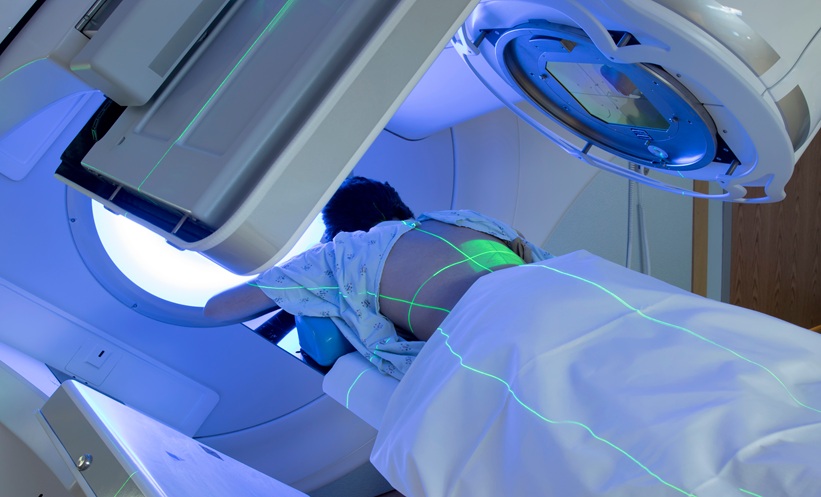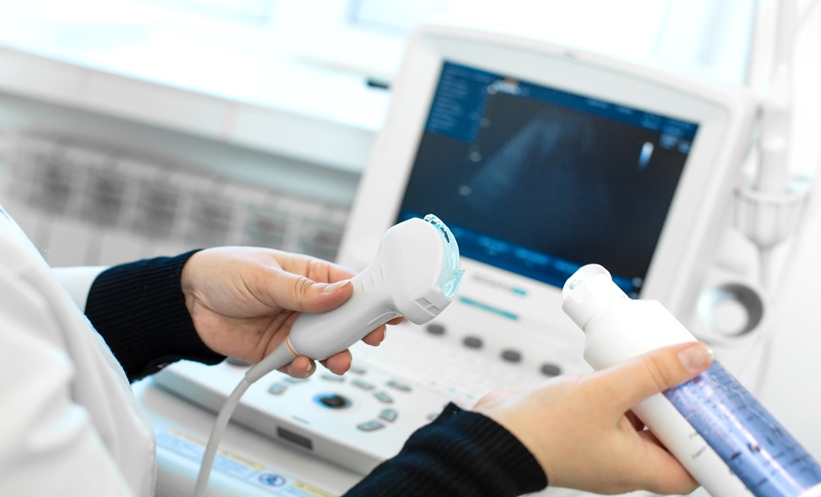Abstract
Post-prostatectomy incontinence (PPI) is a common and significant issue that can affect the quality of life in men who are undergoing treatment for prostate cancer. While some patients opt for conservative management of their incontinence, many elect to undergo surgical treatment as a result of the significant impact to quality of life. The most commonly employed surgical techniques to address PPI are placement of a male sling or artificial urinary sphincter (AUS). Currently, the AUS continues to serve as the gold standard for management, with robust data concerning longitudinal outcomes available. However, in recent years, the various methods to place the male sling have emerged as viable, less complex alternatives that avoid the need for pump manipulation. In the present review, we discuss these main surgical treatment modalities for PPI, and focus on the selection criteria that may influence appropriate operative stratification of PPI patients. Indeed, an individualised, comprehensive assessment of baseline urinary function, age, radiation, prior surgeries, functional status, and other comorbidities must be considered in the context of shared decision-making between the treatment provider and the patient in determining the optimal approach to managing PPI.
INTRODUCTION
Stress urinary incontinence (SUI) refers to the involuntary leakage of urine due to increases in abdominal pressure. In men, SUI is most commonly seen following radical prostatectomy. Sphincter insufficiency has been found to be present in up to 88% of patients and is thought to be the primary underlying aetiology of post-prostatectomy incontinence (PPI), though frequently detrusor instability or impaired contractility are present.1 While urinary incontinence is almost universally evident immediately following prostatectomy, the severity and degree of recovery are variable. Reported rates of incontinence following radical prostatectomy range from 5–72%,2 though this is partly due to the absence of a strict definition for PPI. With the advent of minimally invasive technologies, robotic approaches to performing prostatectomy have become widely popularised; nonetheless PPI remains an issue, with a reported incidence of 4–31% in robotic cases, versus 7–40% reported for open cases.3 Others have reported PPI rates of <10% with improvement over the first 24 months following surgery.4 Depending on the degree of leakage, PPI can have a significant impact on the quality of life in patients who have already undergone treatment for prostate cancer. Approximately half of patients seek some management for PPI,5 and 6–9% elect to undergo surgical treatment.5-12 The most commonly employed surgical techniques to address PPI include placement of a male sling or an artificial urinary sphincter (AUS). Presently, the AUS serves as the gold standard for management,13 with several studies demonstrating favourable long-term outcomes. Of the sphincters available the AMS 800 has been utilised most in the last 40 years. Other options include the ZSI 375 AUS from Switzerland, which consists of a cuff and pump only, and the inflatable periurethral constrictor.3 AUS success rates have been reported as between 54% and 91% in contemporary series or higher, dependent on the definition of success used and the baseline patient characteristics.14
More recently, the male sling has emerged as a viable, less complex alternative, which avoids the need for pump manipulation and is particularly suited for patients with mild-to-moderate PPI severity.14,15 There are a variety of male sling options available, including the bone anchored sling (InvanceTM), the retrourethral transobturator sling (Advance®), and the adjustable retropubic sling (Argus®).16 In the present review, we discuss the surgical treatment modalities available for PPI, with a particular focus on the selection criteria that may influence appropriate operative stratification of patients with PPI.
SURGICAL TREATMENT OPTIONS FOR POST-PROSTATECTOMY INCONTINENCE
Artificial Urinary Sphincter
The modern AUS design was initially introduced in the 1970s.17,18 The continence mechanism of the AUS relies on three components: a cuff that circumferentially occludes the urethra, a pressure regulating balloon (PRB) that may be placed in either retropubic space or an ectopic location,19 and a pump-control mechanism placed in the scrotum. The pump acts as a user interface, whereby the patient can be in control of his continence.
Some variation exists in the surgical approach to AUS implantation. At our institution, the surgery typically begins with a midline perineal incision that continues to the bulbospongiosus muscle. The muscle is split and the urethra is dissected circumferentially at its thickest aspect, the proximal bulbar urethra, as it passes through the urogenital diaphragm. The circumference of the urethra is measured, and a cuff of approximately the same size is secured around the urethra. Cuff sizes can vary and are traditionally ≥4 cm in size; in 2009, however, a 3.5 cm cuff was introduced, and recent data from our institution have shown promising results with this smaller cuff.20,21 Using a separate incision in the upper scrotum, a PRB and pump are placed. The retropubic space has traditionally served as the standard location for PRB implantation; however, as this approach requires that the transversalis fascia is punctured and due to the potential complications related to the surrounding blood vessels and organs, ectopic PRB placements have been suggested with promising results.19,22 At our institution, a high sub-muscular approach is preferred in which the PRB is tunnelled beneath the rectus abdominis muscle using a Foerster lung grasping clamp, without entering the peritoneum.19,22 The pump can then be placed into the subdartos space in the scrotum through the scrotal incision. Finally, the tubing connections are connected, and the device is cycled and locked. A urethral catheter is retained overnight and removed on Day 1 postoperatively.
Male Slings
The advent of male slings has greatly diversified the available treatment options. Various designs have been described, including both adjustable and non-adjustable types.15,23 The bone anchor sling is a polypropylene mesh that is affixed to the bony pelvis, thus avoiding the retropubic space, which may contain scar tissue from the patient’s prior prostatectomy. Slings made of organic material may also be used, but they have higher incidences of degrading. Studies have indicated that the bone anchor sling causes urethral compression, most likely by increasing transmission of intra-abdominal pressure to the bulbar urethra.15 Success with the bone anchor sling has been reported to range from 40–88%.16
The transobturator male sling was approved in the United States by the Food and Drug Administration (FDA) in 2006, based on encouraging results of transobturator tape in women. The technique entails placement of the sling through the obturator foramen, which is further described in a study by Rehder and Gozzi.24 Early results demonstrated a cure rate of 52%, an improvement rate of 38%, and a significant decrease in the median incontinence pad usage.25 The surgery has been reported to be an overall success in 76–91% of cases, though the transobturator sling is not as efficacious in patients with prior radiation compared with bone anchor slings. Placement of a transobturator sling does not result in urodynamic obstruction.16
There are a large variety of adjustable slings available. The adjustable retropubic sling is positioned in the retropubic space and secured to the abdominal fascia with ribbed silicone struts and washers, which are designed to provide the ability for sling adjustment accordingly.16 Newer therapies and variations are currently underway, and the outcome data of patients who elect to receive these treatment modalities for their PPI are still forthcoming. Success rates in patients with adjustable slings have been more consistently reported in 72–79% of patients; however, an increasing number of patients have reported rates of mesh erosion (3–13%).16 Some of these newer-generation adjustable slings may help extend the patient candidacy of male slings.26
PATIENT STRATIFICATION AND CONSIDERATIONS
The decision to pursue AUS versus sling in patients relies on a range of factors, and we currently lack a standardised algorithm for deciding which option would better serve a patient’s needs. While slings can be effective for the management of mild- to-moderate SUI (Grade B evidence), severe SUI is better managed with AUS (Grade C evidence).27,28 However, distinguishing among incontinence severities is based on a subjective evaluation involving some combination of history, physical examination, usage of incontinence pads per day (PPD), pad weights, cystoscopy, and urodynamics.
Some of our objective measures may add only limited value in stratifying patients opting for surgical management of PPI.29,30 Urodynamic evaluation in particular has been shown to correlate poorly with anti-incontinence surgical outcomes.29-31 The role of abdominal leak point pressure (ALPP) in predicting the degree of urinary incontinence following prostatectomy is also dubious as studies have failed to show any correlation of ALPP with severity of sphincter damage and SUI.30 Thiel et al.29 evaluated a comprehensive series of clinical and urodynamic parameters (detrusor over-activity, low first sensation, low bladder compliance, and low bladder capacity) for men with PPI, but none were predictive of successful AUS outcomes.29 Furthermore, none of these parameters were correlated with patient-reported usage of PPD. Taken together, these results mirror those of the multicentre, randomised, non-inferiority Value of Urodynamic Evaluation (VALUE) trial, which found that urodynamic testing in a large cohort of women with uncomplicated, demonstrable SUI did not affect the outcome of surgical intervention.31
Currently available studies regarding AUS and sling outcomes are retrospective in nature, and presently there is a lack of prospective, randomised trials comparing these two modalities. As such, an individualised, comprehensive assessment of baseline urinary function, age, radiation, prior surgeries, functional status, and other comorbidities must be considered in the context of shared decision-making between the treatment provider and patient in determining the optimal approach to managing PPI.
AUS remains the gold standard for surgical treatment of PPI based on the robust long-term outcomes data that is available.13 AUS may be used either as a primary surgical treatment for PPI or as a secondary surgical intervention following failure of a prior sling or AUS. Long-term data demonstrate near complete resolution of PPI (0–1 PPD) in 59–89% of patients with variable length of follow-up.32-34 A recent review of management of PPI indicated that patients who received AUS represented the highest percentage of patients successfully treated for continence.3
Persistent incontinence despite AUS is a common reason for surgical revision and may be corrected with urethral cuff downsizing, repositioning, or tandem cuff placement. Tandem cuff placement is reported to be superior to cuff repositioning in treating persistent urinary incontinence, while urethral cuff downsizing may be associated with an increased rate of mechanical failure.35 Double or tandem cuff implantation is not recommended as an initial operative treatment, as it is shown to increase rates of explantation, revision, and infection.36
Long-term rates of AUS revision have been reported to be approximately 25%, owing to complications such as infection, erosion, mechanical failure, or urethral atrophy.37 When considering this data, AUS may conceivably be a less desirable option in patients with mild-to-moderate PPI. Unlike the AUS, which chronically compresses the urethra circumferentially and often predisposes patients to urethral atrophy or cuff erosion, the male sling compresses only the ventral aspect of the bulbar urethra, leaving dorsal and lateral spongiosal blood flow intact. In a recent study by Kumar et al.,38 which compared patient preference (sling versus AUS), only 75% of patients chose AUS when recommended by a urologist. The remaining 25% chose to undergo a sling procedure against the advice of the surgeon. As indicated in the study, patients who chose to pursue a sling procedure against the advice of the urologist reportedly did so to avoid the need to manually operate the AUS device. Conversely, all patients chose a male sling when recommended by the urologist. When given the option between AUS and male sling, 92% of patients chose the sling.38
Although the follow-up duration tends to be shorter in the male sling literature than in the AUS literature, the male sling appears to be a reasonable alternative to AUS as a first-line treatment in appropriately selected patients with mild-to-moderate PPI. The perineal dissection is similar to that in AUS placement, though without the need for a second counter-incision and the added risk of complications from a multi-component device. The most common complication associated with slings is acute urinary retention, which is reported in up to 24% of patients.14 Infection remains a risk, as with the implantation of any foreign body, though studies appear to demonstrate a higher risk of this complication in adjustable male slings than in nonadjustable slings.14 A recent comparison between transobturator sling versus AUS as primary surgical treatment reveals no significant difference in postoperative continence (0–1 PPD), improvement, patient satisfaction, or complication rates between the two.39 The authors noted that the complication severity was greater in the AUS patients. The mean follow-up for the AUS group was 43 months, compared with only 24 months for patients receiving slings. In another study by Lim et al.40 in 33 patients with mild PPI and similar length of follow-up, there was no statistical difference in success or complication rates between patients who received adjustable male slings and those who underwent AUS implantation.
Failure of Prior Incontinence Surgery
Certain risk factors have been identified that may complicate PPI surgery, or increase risk of postoperative complications. Patients with these factors deserve special consideration and ought to be counselled heavily regarding their options and the available data. One such population is those who have undergone prior sling or AUS and have either recurrent or persistent incontinence. Ajay et al.41 recently reported a drastically higher success rate after AUS (94%) than repeat transobturator sling placement (45%) following previous sling failure. Similarly, in another study by Tuygun et al.,42 AUS demonstrated a higher cure rate (75%) than adjustable bulbourethral male sling placement (25%) following previous AUS erosion (mean follow-up, 10 and 22 months, respectively). While the success rate of male slings tends to be reduced in patients with failed prior slings,16,43 AUS placement following sling failure has demonstrated similar outcomes and complication rates when compared with primary AUS as initial treatment of PPI.44 Hence, in the setting of failed prior incontinence surgery, AUS is generally preferred over sling placement.
Prior Radiation
As multimodal approaches to managing prostate cancer continue to emerge and be refined, the number of patients seeking management of PPI with a prior history of radiotherapy is increasing. Radiation can cause progressive tissue changes including obliterative endarteritis and tissue atrophy.45,46 This often makes surgical dissection more difficult and compromises postoperative healing, thereby predisposing patients to increased rates of complication and failure following PPI surgery. Radiation has been identified as an independent predictor for cuff erosion following AUS.47 A recent meta-analysis revealed increased rates of persistent urinary incontinence, erosions, and device infections in patients managed with AUS for PPI after radical prostatectomy and external beam radiation therapy, compared with radical prostatectomy alone.48 Male slings also tend to have higher failure rates following prior radiation.16,43 While comparative studies of sling versus AUS in the post-irradiation setting currently appear to be lacking, we are generally very cautious in offering slings to patients with prior radiation given the concerns of a higher likelihood of failure. AUS is preferred in this setting, though it is important that these patients understand the greater risk of complications and failure of any form of surgical intervention. Kim et al.14 noted that patients with a history of pelvic irradiation are more likely to require readjustment of their slings, suggesting perhaps that such patients should be counselled on receiving an adjustable sling over a non-adjustable type, if a sling is ultimately chosen despite extensive counselling and discussion of options.
CONCLUSION
PPI can significantly impact the quality of life of men following treatment for prostate cancer. Surgical management of PPI presently entails two widely employed approaches, namely AUS, which is currently considered the gold standard, and the male sling, which was developed more recently and continues to gain favourability in selected cases. The decision to pursue an AUS or sling relies on a range of factors, and we currently lack a standardised algorithm to surgically stratify patients. There is a growing need for prospective data comparing the efficacy of these modalities in various settings, and such data may help direct clinicians in counselling PPI patients appropriately. Nonetheless, at present an individualised, comprehensive assessment of baseline urinary function, age, radiation, prior surgeries, functional status, and other comorbidities must be considered in the context of shared decision-making between treatment provider and patient in determining the optimal approach to managing PPI.








